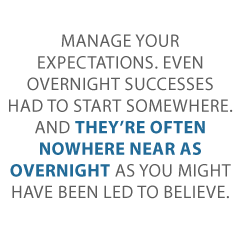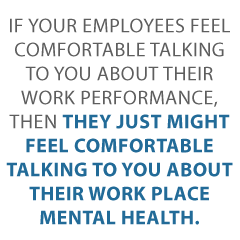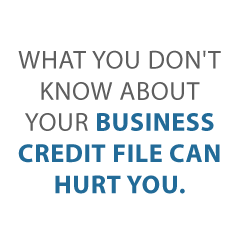
Minority Startup Business Loans: What You May Not Know
There seems to be a lot of confusion out there related to minority startup business loans. The fact is, there are not a lot of loans specific to minorities. This is true whether your business is still in the startup phase or an already established business.
Minority Startup Business Loans May Not Be What You Think
While specific minority startup business loans don’t really exist, there are some loans that work better for minority startups than others. In addition, there are a ton of other resources available. Some of these are minority specific, and some not.
Find out why so many companies use our proven methods to get business loans.
Minority Startup Business Loans: Start With the Small business Administration
When you talk about business loans of any kind, you have to talk about the SBA. While they do not lend funds themselves, they do handle the administration of many loan programs that help small businesses get the funds they need through partner lenders.
Minority Startup Business Loans: 7(a) Loans
This is the Small Business Administration’s main program. It provides federally funded term loans up to $5 million. The funds can be used for a number of purposes. For example, expansion, purchasing equipment, and working capital can all be funded with 7(a) loans. Banks, credit unions, and other specialized institutions in partnership with the SBA process these loans and disburse the funds.
Minority Startup Business Loans: 504 Loans
504 loans are also available up to $5 million and can buy machinery, facilities, or land. Typically, they are used for expansion. In fact, these work especially well for commercial real estate purchases.
Minority Startup Business Loans: Microloans
These are $50,000 or less. Furthermore, they work well for a number of things. Business, purchasing equipment, buying inventory, or general working capital are all options for using these funds.
Minority Startup Business Loans: SBA Express Loans
These are fast turnaround loans. The SBA takes 36 hours or less to give a decision. There is less paper work as well. As a result, express loans are a great option, if you qualify.
Minority Startup Business Loans: SBA Community Advantage Loans
This one is a pilot program. It will either expire, or the SBA will extend it in 2020. Its purpose is to promote economic growth in underserved areas and markets. Decision makers look past such things as poor credit or low revenue if the business has the potential to create jobs or promote economic growth in underserved areas.
These are some of their most popular programs. However, the Small Business Administration does so much more for small businesses in addition to these. Get more details on the SBA, these loan programs, and additional resources offered by the Small Business Administration here.
Minority Startup Business Loans: Private Lenders
In addition to SBA loans, there are several private lenders that offer products that work really well for minority business owners. Below are just a few.
OnDeck
OnDeck offers lines of credit and term loans with fixed interest rates. You can get up to $500,000 with a term loan. Also, they have an A rating with the Better Business Bureau. Even better, the minimum FICO they require is 600. However, you must have $100,000 minimum annual revenue and be in business for at least one year. Find out more about OnDeck in our review.
BlueVine
BlueVine offers a number of financing options. For instance, term loans, invoice financing, equipment financing, lines of credit, and merchant cash advances are all offered by BlueVine. As a requirement, you have to be in business for at least 6 months. A minimum revenue of $100,000 and a minimum credit score of 600 is required if you want a term loan or line of credit. However, for invoice factoring, the minimum credit score is just 530! Furthermore, they have an A+ rating with the BBB. Find out more about BlueVine in this review.
Funding Circle
If you’re looking for a low APR, then Funding Circle is your place. They have fixed rate term loans that require a credit score at least 620. Unlike BlueVine, there is no minimum revenue requirement. However, they do require you to be in business for at least 2 years. They have an A+ BBB rating also. Find out more in our Funding Circle review.
StreetShares
Of course, this company also offers invoice financing, term loans, and lines of credit. Similar to others, there is a number of years in business requirement. However, they require less minimum annual revenue than the others at only $25,000. The minimum credit score is 600. Like some of the other, they have an A+ rating with the Better Business Bureau as well. Find out more about StreetShares in our review, here.
SmartBiz
SBA loans typically take a lot of time and paperwork. Still, SmartBiz found a way to speed things up. They make it easier than ever. Unfortunately, they do have stricter requirements. Your credit score has to be 650. Like others, they also require you to be in business for 2 years or more. In addition, annual revenue has to be $50,000 at least. There can be no outstanding liens, bankruptcies, or foreclosures in the past 3 years.
You Can Supplement Minority Startup Business Loans with Grants
If you qualify, there are many grant options available. While they usually are not enough to fully fund a business, they can be great for supplementing loan funds. There are not many specifically for minorities, but there are some. Here is just a sample of what is out there.
Grants Exclusive to Minorities
First Nations Development Institute Grants
The mission of this group is to offer grants that help Alaska Natives, Native Hawaiians, and Native Americans. As a bonus, they offer assistance in the application process in addition to funds.
Not only that, but there are a wide range of opportunities from the First Nations Development Institute. New ones initiate as old ones retire. There is a mailing list you can join to receive information about new opportunities as they become available.
Find out why so many companies use our proven methods to get business loans.
National Black MBA Association Scale-Up Pitch Challenge
Also known as NBMBAA, the Scale-Up Pitch Challenge has cash prizes ranging from $1,000 to $50,000. The association states its purpose is to help newer businesses that have an African founder that maintains equal ownership.
Be aware, a business must be a member of the NBMBAA to compete. To do this, there is a $10 monthly membership fee. After that, there is an online application. If chosen, you must submit a three-minute pitch. Then, finalists go on to compete at the NBMBAA annual conference.
Non-Minority Specific Options
There are grants options that can work well even though they are not exclusively for minorities. Some examples include the following.
FedEx Small Business Grant
This grant is the company’s way of working to strengthen small business innovation. There are 10 grants the company awards each year. They range from $15,000 to $50,000, and if you’re a minority owned business with a cutting-edge product, this could be the grant for you.
A business must use the FedEx website to submit entries. There are a few questions to answer about your business. In addition, there is a requirement for an elevator pitch about what makes your business special. Also, you have to explain how you would use the grant funds. A 90 second video submission is optional.
NASE Growth Grants
The National Association for the Self-Employed (NASE) has small business Growth Grants of up to $4,000. In reality, these are for micro-businesses. The proceeds can be used for a number of things. For example, they can be utilized for marketing, advertising, expansion, and even to hire employees. These grants are open to everyone. However, you do have to be a NASE member to apply. Membership fees vary based on the membership level chosen.
USDA Value Added Producer Grant
The USDA’s Value-Added Producer Grant (VAPG) program offers grants for small businesses. It includes minority owned business, and grants range up to $250,000. At their core, these grants are designed to help agricultural producers with activities that add value to their products. As a result, grants are open to those in rural areas. They must be operating as one of the following:
- Cooperative
- Farmer
- Rancher
- an independent agricultural producer
- or an agricultural producer group
Tips for Landing Any Business Loan
Here are a few tips to help you land any loan, specific to minorities or not.
Work to Increase Fundability
Simply put, fundability is the ability of your business to get funded. That simplicity leaves a lot out however. How do you get to be fundable? What determines fundability? How do you increase fundability?
A potential creditor needs to see that your business is legitimate and profitable. A lot of loan applications are denied approval due to concerns about fraud. Others are not approved because something didn’t look right and threw up a red flag. If you understand what fundability is and how to get it, you can stop any such red flags before they cause you problems.
So what makes a business fundable? Here is a streamlined list.
Find out why so many companies use our proven methods to get business loans.
The Elements of Fundability
- A Fundable Foundation
- Separate contact information
- EIN
- Business Bank Account
- Proper Licensing
- Professional Website
- Business Credit Reports
- Other Business Information Agencies
- Identification Numbers
- Business Credit History
- Business Information
- Financial Statements
- Business Financials
- Personal Financials
- Bureaus
- Personal Credit History
- Application Process
Go here to get more detail on each of these and how they affect the fundability of your business.
Put Together an Amazing Business Plan
In addition to working on the fundability of your business, you need to have a great business plan to get a lender to pay attention. This is more than just a piece of paper telling a lender about your business. It should include research, projections, and more. A well-put together, complete business plan includes the following.
Opening
An Executive Summary
Simply put, this is a complete summary of the business idea.
Description
The description goes into more detail than the summary when describing the business. For example, what type of business is it? What will it offer? This is where you get others excited about what you are doing.
Strategies
For this piece, layout your plan for getting things up and running. Like, do you have a marketing plan? Is there a location you have in mind? How many employees you will start with? What is your ramp up plan?
Research
Surprising to some, writing a complete business plan requires a ton of research. Not only must you do market research to ensure your product is needed and wanted, but also to see that your location and market coincide. In addition, you need to know that the market can support your business.
It is also necessary to research any existing competitors.
Market Analysis
This actually includes two parts, the analysis of audience and the competitive analysis.
Analysis of Audience
First, what need will your business fill, and for who? For example, will your business fulfill a childcare need for working parents? Next, how will your business fill those needs? Include all of this in the analysis of audience section.
Competitive Analysis
Is there a business currently working to fill this need? Can the market hold more options? Given that information, how do you plan to be the best?
Strategy
This is the way you plan to run your business moving forward. Put another way, it is how you plan to put into action what you learned in the research phase.
Plan for Design and Development
How is all of this going to play out? From start to finish, what steps are you going to take? This section includes more detail than the strategies section.
Plan for Operation and Management
How will ownership be structured, and who will handle the day to day running of the business? It could be as simple as saying you are the sole owner and operator. In contrast, it could mean laying out a complete board of directors format. It just depends on how you plan for your business to work.
Financials
While all parts of the business plan are important, this is where lenders really sit up and pay attention. Even if the whole rest of the plan is fabulous, it will not matter if the financial section isn’t in order.
Financial Information
This section includes current financials, projections, and a plan for the loan funds you are asking for. Lenders need to see that you know how to handle the funds you get, and that you have a plan for paying them back.
If at all possible, you need to hire help with this. A professional writer, accountants, and research consultants can help you make your business plan the best it can be. If you absolutely cannot hire help, there are some great business plan templates out there.
Minority Startup Business Loans: Now You Know
Business loans are a great way to fund a startup, whether you are a minority or not. As a minority business owner, it is important to know what resources are available to you. Equally as important, is that you do not pigeon hole yourself to just minority resources. You need to know, out of the resources that are available to everyone, which ones will work best for minorities. This list should give you a great starting point, but be sure to do your own research as well.
The post Minority Startup Business Loans: What You May Not Know appeared first on Credit Suite.














